How to Wear Barefoot Shoes
Do your feet hurt immediately after you pull off your shoes? Is a hectic day fast becoming synonymous with painful ankles? You might need to look into barefoot shoes. If you don’t know where to start, don’t worry – we’ve made a handy guide on how to wear the best barefoot running shoes.
We wrote this guide with barefoot enthusiasts looking to join the barefoot movement in mind. We will also empower you with the factors to look out for when getting the best minimalist shoes or shopping for minimalist soles for your old lightweight shoes.
What are Barefoot Shoes?
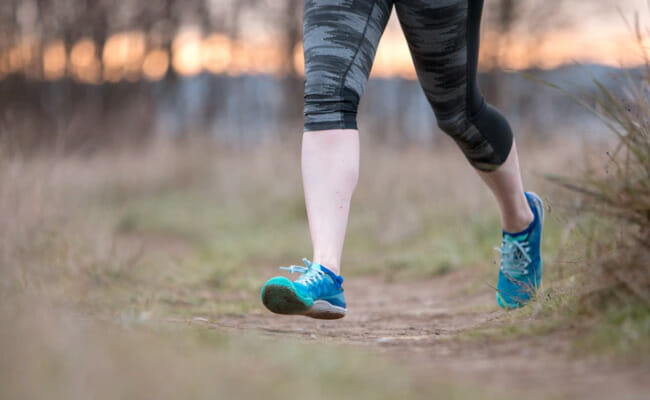
Photo Credit: REI
Barefoot shoes are breathable elastic materials made into casual and fitting footwear. In ‘Barefoot Shoes,’ “Barefoot” has much more to do with the feeling of a less-covered shoe that helps to ease the feet in activities such as trail running.
The first barefoot shoe, Vivibarefoot, was created by Tim Brennon around two decades ago. Other barefoot shoes that came later are vapor glove, Trail glove 6 Eco, and Altra Superior trail shoe, among many others.
It feels as if one were barefoot enough when wearing it. Full shoes tend to limit the foot’s natural movement as much as possible. That’s why we often hear the term ‘minimal shoes’ when referring to barefoot shoes. To clarify what other possible definitions describe barefoot shoes, below are the unique features of minimal shoes.
Flat and Thin Soles
There’s zero drop in height difference between the forefoot (inside) and the underfoot. The shoes are designed without heel-to-drops, so your heels won’t lift or rise as you walk or run.
The sole has the same thickness over its entire length, meaning your entire foot is as flat on the ground as when walking barefoot. Minimal footwear is dubbed zero drop shoe for this reason.
The wearer feels the ground under their feet while wearing a barefoot running shoe.
Lightweight and flexible
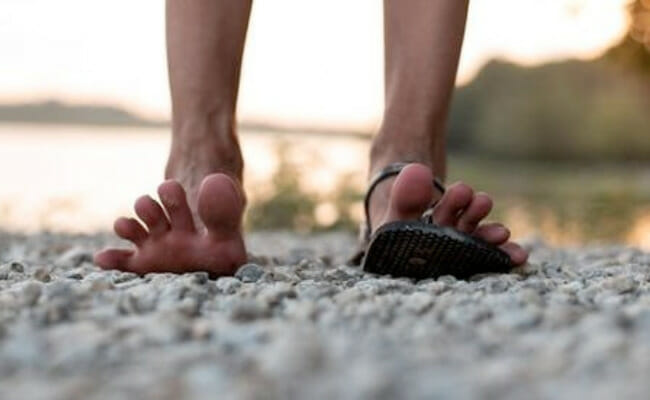
Photo Credit: Anya’s Reviews
The flexibility of the sole is just as important as its thickness. The material of the sole determines the mobility of the shoe. The upper should is as light and flexible as possible.
Wide Toe Box
Most regular shoes have a tapered toe box towards the front. This does not match the shape of our feet and compresses our toes into an unnatural form.
As a result, freedom of movement and stability is limited. In particular, the barefoot running shoe has a wide toe and a shape that fits the foot snugly. This will keep the toes on the ground and naturally straightened as you walk any terrain.
No Support
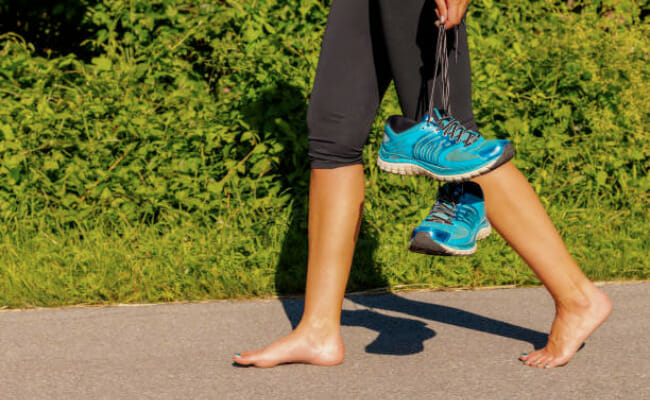
Photo Credit: Getty
Standard footwear usually has cushioning, padding, or shoe fill/insert. The intent is to brace and facilitate the work of the foot.
This support appears to be positive on the surface. But if your legs don’t need to do anything, they weaken with those pads over time. The feet almost stay in ‘sleep mode’ even when walking or running.
Minimal shoes intentionally exclude support. They don’t offer the heel-to-toe drop enjoyed by users of modern non-barefoot shoes. Excluding cushioning materials implies that each foot (re)learns to support itself.
The whole situation gets more substantial when toe joints and the ankle have assumed relaxed muscles, and a sudden stretch causes a foot cramp.
Why Wear Barefoot Shoes?
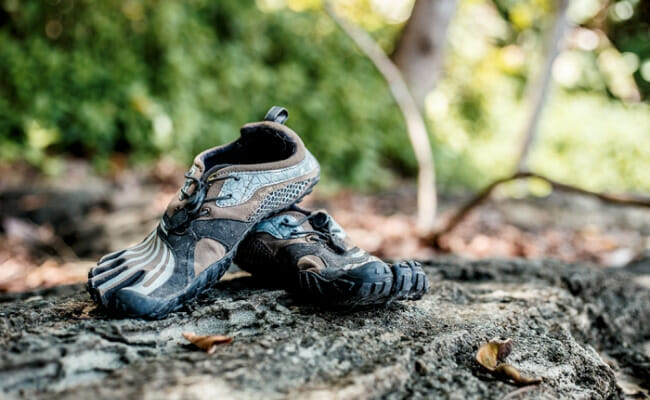
Photo Credit: Adobe
The primary purpose barefoot shoes serve is to provide ease from locomotory friction. A great barefoot shoe aids athletic performance (especially running) without stress. While walking long distances, trail running, jumping, or getting involved in other active sports, friction reduces the potential of leg parts in such activities.
Also, wearing barefoot shoes is foot care-conscious. It offers a feature like a wide toe-box that frees the toes and makes them slide over another without any hitch (toe compression, skin peeling/wearing/tearing).
How to Wear Barefoot Shoes
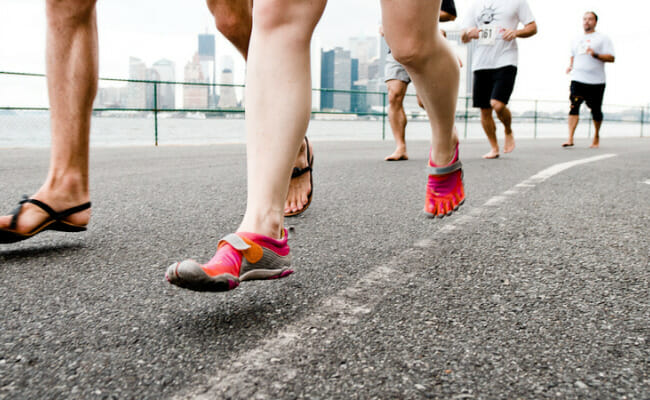
Photo Credit: Precision Nutrition
It’s perfectly normal for you to be excited about this new approach to foot health and function. Ideally, barefoot shoes have benefited people with successful transition into foot-shaped minimalist shoes and natural foot health approaches.
But it is possible to be overzealous in adopting this new footwear. Failing to transition slowly and properly from regular shoes to minimalist footwear might lead to problems for some.
Transition
Many people benefit from a stepwise approach to minimalist shoes that gradually transition from a conventional built-up shoe to a transitional type (such as the Lems Primal Pursuit) to an authentic minimalist shoe. There are two primary considerations as it concerns this stepwise approach:
The sole
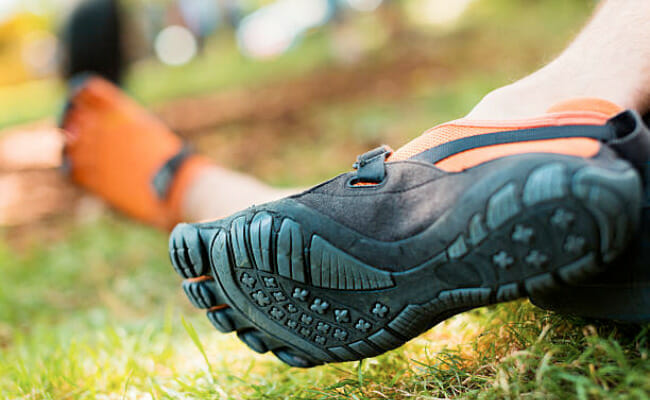
Photo Credit: Getty
The sole is extremely sensitive, which is great for sensing the ground and making appropriate menial adjustments in a gait. But after a lifetime of wearing thick-soled shoes, the sole (including the skin, muscles, nerves, and other tissues that make up this part of the body) is not correctly adapted to the ground, and being barefoot or using thin-soled shoes can be uncomfortable.
The best way to build up or condition your foot’s sole is to start with slightly thicker-soled footwear and then move to thinner-soled options over time.
Note that your thicker-soled footwear selection should still possess all the other foot-healthy characteristics recommended. These include a flat platform (i.e., no heel elevation, no toe spring, and no arch-propping inserts), a toe box that’s widest at the ends of your toes, a flexible sole that you can easily bend or twist, and a low overall shoe weight.
The Achilles tendon
After wearing conventional shoes with heel elevation for years (or decades, in many cases), the Achilles tendon often becomes contracted or shortened (sometimes up to 3/4 of an inch).
A shortened Achilles tendon, through arch support, will return to its regular length after you stop wearing standard footwear and allow your foot to rest on a level plane, but this process takes time.
Warm compresses, physical therapy, hot compresses, or cooling gels can help conversion and recovery.
A slow, gradual transition from regular to transitional shoes to truly minimalist running shoes can make the transition to healthier shoes more enjoyable.
Timing
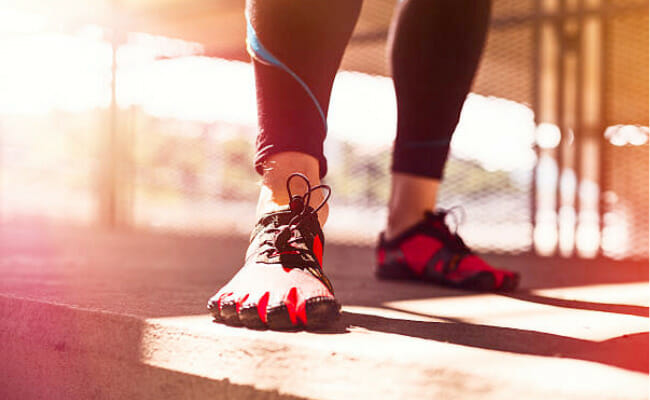
Photo Credit: Getty
Consider wearing your new versatile barefoot trainer for a brief period, such as 30 minutes per day, and then gradually increasing wear-time by 30 minutes per day as your feet and body adapt to the changes. If you’re a runner or walker using minimalist athletic shoes for the first time, consider paring back your mileage initially. As your feet and toes become more robust, you can begin wearing your barefoot shoes for longer runs or walks.
Barefoot shoes may be considered promising candidates for a slightly accelerated transition period in professional athletes.
This could include runners or walkers experiencing significant pain while using their conventional athletic shoes or those who already spend a lot of time barefoot.
Suppose you stop using conventional footwear altogether after starting with the best barefoot shoes. In that case, it’s crucial to remain vigilant and monitor your feet and lower legs for signs of fatigue or strain as you start wearing them. Know when to back off and give your feet time to rest and adapt to the changes in your feet’ skin and tissues.
Mobility
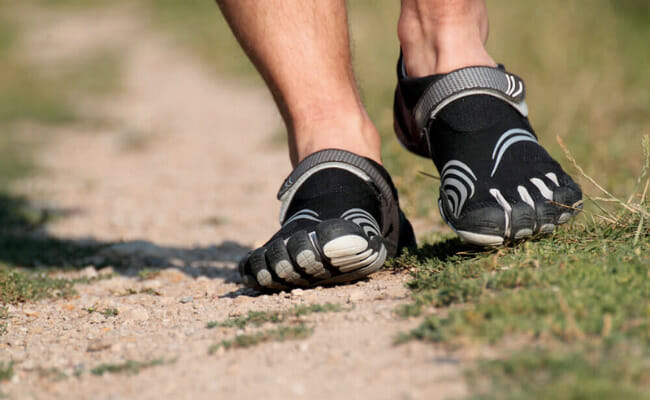
Photo Credit: Pasunautre
It is good to remember that the barefoot shoe is inextricably linked with changes in walking or running postures. The soles of these shoes are thin and flexible, so you can’t hit the ground as hard as you would with your feet.
Most people switching from regular sneakers to barefoot sneakers use a forefoot or “midfoot” kick (i.e., the whole wide feet. Use the area in the front foot that occurs just below the body instead of hitting right in front of the body. Ensure you wear a barefoot shoe fitted enough. Wear it in a way to allow you to fold up your toes.
Padding
Use metatarsal pads and heel cups if needed. Metatarsal pads are a discreet way to restore proper muscle and tendon balance in your foot and lower leg.
Metatarsal pads also reposition your forefoot fat pad back to a location that cradles and protects your metatarsal heads. The metatarsal heads are a common pain point in many people with foot problems.
They are a common location for stress fractures in those who habitually slap the ground when running (a regular occurrence in those who wear conventional athletic shoes).
Metatarsal pads, if appropriately placed, can also help spread your transverse foot arch, which helps take pinch pressure off the sensitive structures that run through the ball of your foot, including nerves and blood vessels.
Heel cups are another helpful barefoot shoe product that alleviates point tenderness in the heel—something that occurs from time to time in minimalist shoe adapters. This point of tenderness can happen early in the transition phase or later after you’ve been wearing the best barefoot shoes for some time.
Real heel pain is relatively rare for minimalist wearers but can be uncomfortable and, in some cases, refute a natural approach to foot health.
A simple heel cup eliminates this discomfort and allows you to wear shoes that will enable your feet to function as nature intended. Frustration can occur occasionally, but in most cases, there are simple solutions or adjustments to help you maintain optimal foot health.
People who shouldn’t wear barefoot running shoes
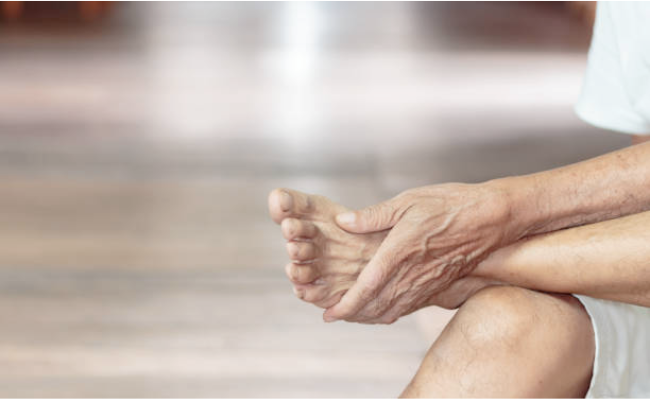
Photo Credit: Getty
In the previous sections, we discussed the benefits of wearing the same or particular pair of thin-sole running shoes.
However, are there disadvantages of rocking heel-to-toe drop shoes like vapor gloves on firm ground or gym floor? Yes, sacrificing the thick sole might expose the feet to sharp objects that make it through the barefoot running shoe.
People who should not wear barefoot running shoes include people with diabetic feet, abnormal foot structures, and disjointed feet.
While barefoot running shoes can be used as outdoor gear, it is not advisable to wear such shoes in deep mud or on floors with sharp objects. People with arch issues can opt for comfortable shoes or orthopedic shoes with wider toe box features.
Final Thoughts
When searching for the best barefoot running shoes, go for a shoe with foot protection features, as mentioned early in this article. If you have sweaty feet, a rubber sole with a breathable cotton side helps to alleviate the awkward slippery barefoot feel.
The best barefoot shoes are for trail running, weight training, gym training, or running barefoot. In addition, barefoot shoes are perfect for casual wear or everyday wear.

